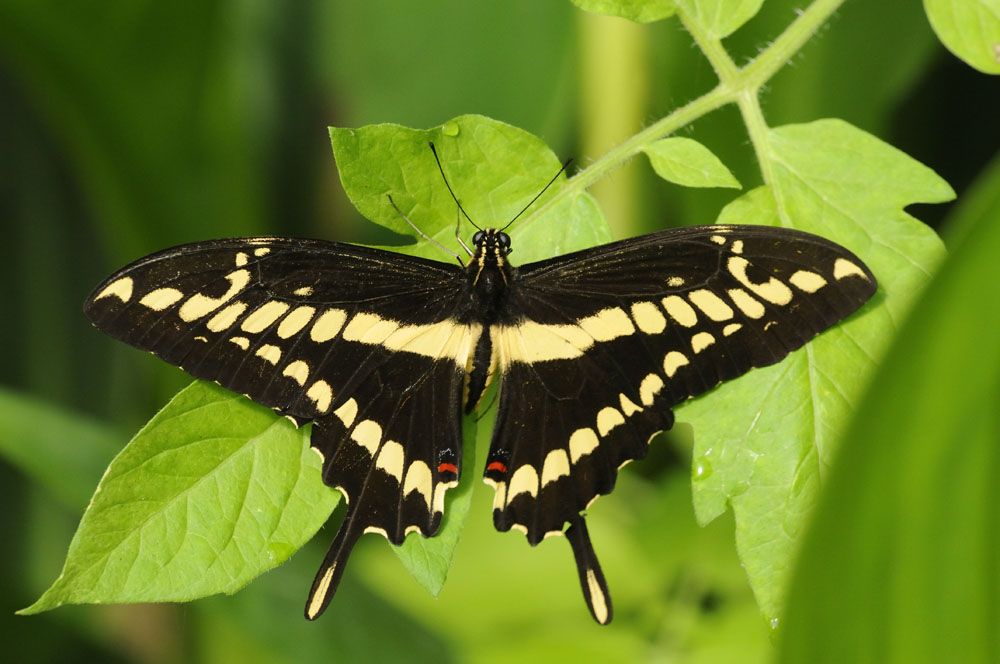
Giant Swallowtail – Papilio cresphontes
Giant Swallowtail (Papilio cresphontes)
Common Name: Giant Swallowtail
Latin Name: Papilio cresphontes
Appearance:
The giant swallowtail is a large and distinctive butterfly with a wingspan of up to 6 inches. It has black wings with yellow and orange markings and a long “swallowtail” protrusion on its hindwings.
Host Plants:
The giant swallowtail is known to eat different plants, such as citrus trees, prickly ash, rue, and hop tree. Its larvae feed specifically on the leaves of these plants, often causing noticeable damage.
Territory:
The giant swallowtail is found primarily in the eastern United States, from southern New England to Florida and west to Texas and the Dakotas. It is also found in some parts of Mexico and Central America.
Damages Caused by the Giant Swallowtail:
Although the giant swallowtail does not cause significant damage to its host plants, its larvae can consume large quantities of leaves and make noticeable holes in the foliage. In large numbers, they can defoliate entire plants.
Life History and Habitat:
Giant swallowtails have one to two generations per year, depending on the location. The female lays eggs on the underside of leaves, and the larvae hatch and feed on the leaves of the host plants. The larvae then pupate and emerge as adult butterflies in the summer. The giant swallowtail prefers sunny, open habitats with its host plants, such as gardens, parks, and citrus groves.
